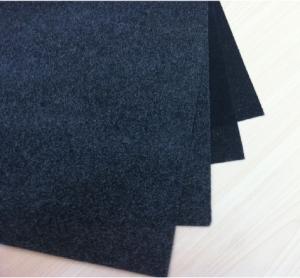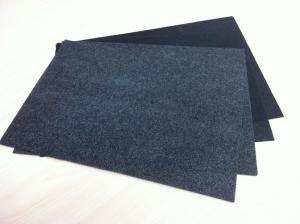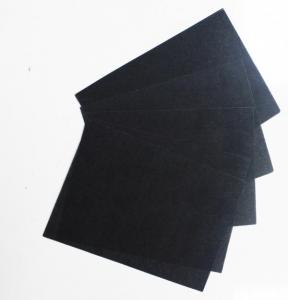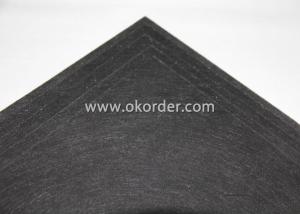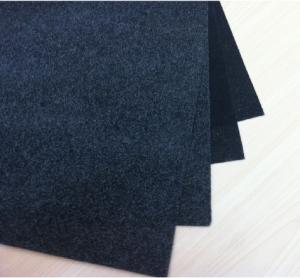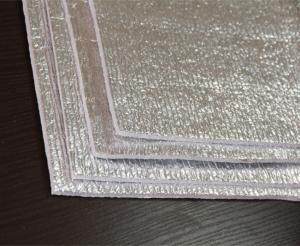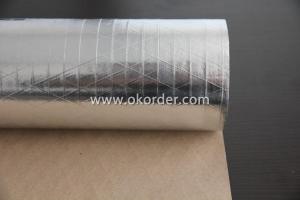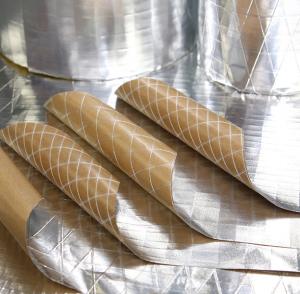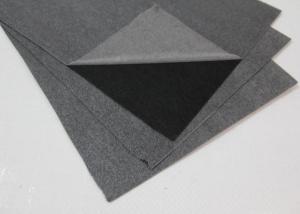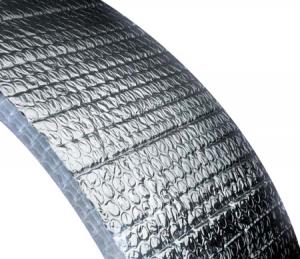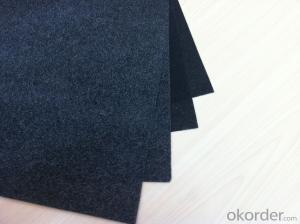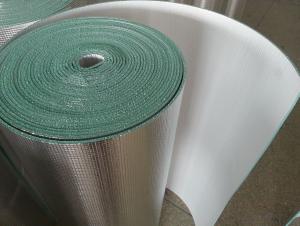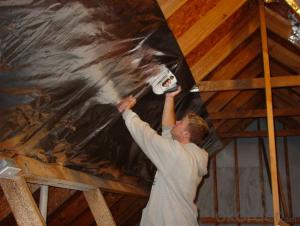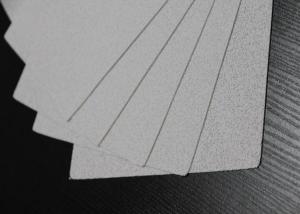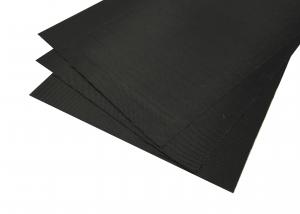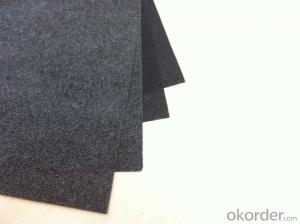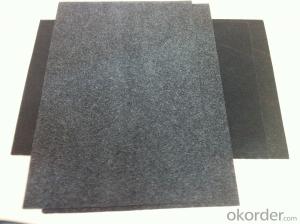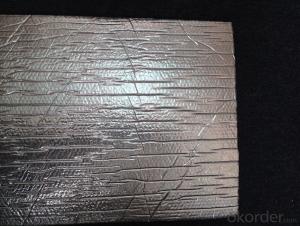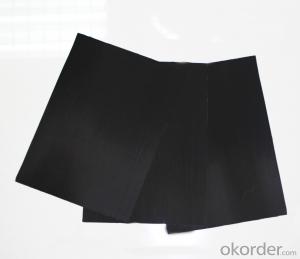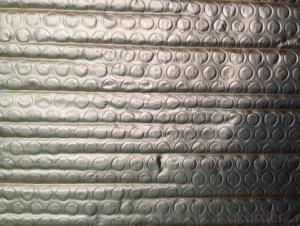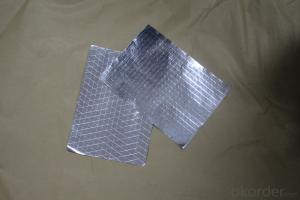Black Fiberglass Tissue-BFT001-65E
- Loading Port:
- China Main Port
- Payment Terms:
- TT or L/C
- Min Order Qty:
- 10000M2 m²
- Supply Capability:
- 50000M2 Per Week m²/month
OKorder Service Pledge
OKorder Financial Service
You Might Also Like
Specifications of Black Fiberglass Tissue
|
Specification | ||
|
ITEM |
UNIT |
VALUE |
|
Type |
|
E |
|
Weight |
g/m2 |
65±5 |
|
Thickness |
mm |
0.40 |
|
Tensile Strength MD |
n/5cm |
≥130 |
|
Tensile Strength XD |
n/5cm |
≥90 |
|
Fiber Diameter |
µ |
9 |
|
Fire Resistant Property |
|
B1 |
SIZE:
Width: 0.6m---1.3m
Length: 100m-1000m
Core I.D.: 3"(76mm ±1)
Based on order, special sizes are also available.
MSDS:No harm for body and environment, non-volatile product.
Remarks:
1. The data above are typical results and subject to change without notice.
2. Tolerance: Weight and Thickness: ±10%; Width: ±3mm; Length: ±0.5%.
3. The products should be stored at room temperature, kept from wet and kept away heat source.
4. Good appearance without stain, oxidation, mildew.
5. The users should take test and do trial-application on the above products before coming into application so as to witness and ensure suitability for their special purpose and technique.
Usage/Applications of Black Fiberglass Tissue
Fiberglass facing is good at fireproof, mildew resistant, damp proof and strong air permeability. After laminated with glass wool or rock wool, the physical properties is excellent such as heat preservation, noise elimination, fire retardant, extinction, etc.
Packaging & Delivery of Black Fiberglass Tissue
Each roll is packed by the water-proof film
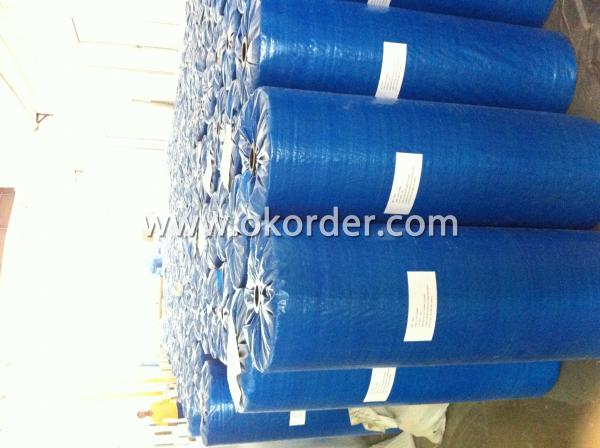

- Q:How does fiberglass facing improve insulation?
- Fiberglass facing improves insulation by acting as a barrier that reduces heat transfer through conduction and radiation. It helps to trap air pockets within the insulation, enhancing its ability to resist heat flow. Additionally, the facing can provide a vapor barrier, preventing moisture from seeping into the insulation and compromising its effectiveness.
- Q:What is the typical thickness of fiberglass facing?
- The typical thickness of fiberglass facing can vary depending on the specific application and requirements. In general, fiberglass facing is available in thicknesses ranging from 0.5 millimeters to 2 millimeters. Thinner fiberglass facing, around 0.5 to 1 millimeter, is commonly used for lightweight and flexible applications such as insulation and acoustic panels. Thicker fiberglass facing, around 1.5 to 2 millimeters, is often used for more heavy-duty applications where higher strength and durability are required, such as in construction and industrial settings. It is important to consider the specific needs and specifications of a project to determine the appropriate thickness of fiberglass facing to ensure optimal performance and functionality.
- Q:Is fiberglass facing fire-resistant?
- Indeed, fiberglass possesses fire-resistant qualities. Its composition comprises a blend of glass fibers and resin, resulting in exceptional resistance to heat. Fiberglass exhibits the ability to endure elevated temperatures without undergoing melting or emitting harmful fumes. It finds frequent application in scenarios where fire resistance holds paramount importance, including insulation, protective garments, and building materials. Nonetheless, it is crucial to acknowledge that the fire-resistance attributes of fiberglass may be influenced by the substances it is coupled with, such as adhesives or coatings.
- Q:Is not the multi-layer membrane waterproof, the bottom of the membrane should use glass fiber mats?
- In the yin and yang angle additional layer construction better fit, polyester tire waterproofing membrane tires hard
- Q:How is fiberglass facing installed?
- Fiberglass facing is typically installed in a few simple steps. First, the surface where the fiberglass is going to be installed should be clean, dry, and free of any dust or debris. This ensures proper adhesion of the facing. Next, the fiberglass facing is carefully unrolled and cut to the desired size, making sure to leave a little extra material on each side to ensure complete coverage. The facing is then positioned over the surface and pressed down firmly, starting from the center and working towards the edges. To secure the fiberglass facing in place, an adhesive or adhesive tape is applied along the edges, ensuring a tight seal. It is important to smooth out any wrinkles or air bubbles that may have formed during the installation process. In some cases, mechanical fasteners such as staples or nails may be used to further secure the fiberglass facing, especially in high-impact areas or where extra reinforcement is needed. Overall, the installation of fiberglass facing is a relatively straightforward process that requires attention to detail and proper surface preparation. Following these steps will ensure a successful installation that provides durability and protection.
- Q:How does fiberglass facing contribute to energy efficiency in buildings?
- Fiberglass facing plays a crucial role in enhancing energy efficiency in buildings. This material is typically used as insulation, providing a barrier to heat transfer and reducing the amount of energy needed to maintain a comfortable indoor temperature. One of the primary ways fiberglass facing contributes to energy efficiency is through its high thermal resistance or R-value. The R-value measures the resistance to heat flow, and fiberglass insulation with facing has a higher R-value than materials without facing. This means that it can effectively prevent the transfer of heat between the inside and outside of a building, reducing the need for excessive heating or cooling. Furthermore, fiberglass facing helps to create an airtight seal when installed properly. This prevents the infiltration of drafts or air leaks, which can significantly impact energy efficiency. By sealing off these gaps, fiberglass facing helps to maintain a consistent indoor temperature and reduces the workload on heating and cooling systems. Another important aspect is that fiberglass facing can act as a vapor barrier. It prevents the movement of moisture through the insulation, reducing the risk of condensation and subsequent damage to the building structure. By controlling moisture, fiberglass facing contributes to the overall durability and longevity of the insulation system. In addition to its insulation properties, fiberglass facing is also fire-resistant, which is crucial for building safety. It can help slow down the spread of flames in case of a fire, providing valuable time for occupants to evacuate and for emergency services to respond. Overall, fiberglass facing is a cost-effective and efficient solution for improving energy efficiency in buildings. Its high R-value, ability to create an airtight seal, moisture control capabilities, and fire resistance all contribute to reducing energy consumption, lowering utility costs, and creating a more comfortable and sustainable indoor environment.
- Q:How does fiberglass facing compare to other types of insulation materials?
- Fiberglass facing is a popular choice for insulation materials due to its excellent thermal performance and durability. Compared to other types of insulation materials such as foam or cellulose, fiberglass facing offers superior resistance to moisture, mold, and pests. It also provides better fire resistance, making it a safer option. Additionally, fiberglass facing is relatively easy to install and has a long lifespan, making it a cost-effective choice for insulation needs.
- Q:China's glass fiber product code is what?
- Will be replaced by N or K, respectively, said ND-8, KH-550; ④ EM will be used instead of CM, said the alkali fiberglass
- Q:What is the glass fiber needle felt dust filter bag
- The needles were used to puncture the chopped fiberglass mats, and the fibers between the felt layers, the fiberglass between the felt layer and the reinforcing glass cloth were mechanically entangled
- Q:How is fiberglass facing used in construction?
- Fiberglass facing is commonly used in construction as a protective layer for insulation materials. It is applied on walls, roofs, and other surfaces to enhance energy efficiency, prevent moisture penetration, and provide thermal insulation. The fiberglass facing acts as a barrier, reflecting heat and reducing heat transfer. Additionally, it adds strength and durability to the insulation material, making it suitable for various construction applications.
1. Manufacturer Overview |
|
|---|---|
| Location | Jangsu, China |
| Year Established | 1999 |
| Annual Output Value | Above US$0.3 billion |
| Main Markets | 0.00% Mid East 15.00% Northern Europe 15.00% North America 10.00% Eastern Asia 20.00% Africa 0.00% Eastern Europe 20.00% Southeast Asia 0.00% Oceania 0.00% Western Europe 0.00% Southern Europe 0South east asia;North America |
| Company Certifications | ISO 9001:2008 |
2. Manufacturer Certificates |
|
|---|---|
| a) Certification Name | |
| Range | |
| Reference | |
| Validity Period | |
3. Manufacturer Capability |
|
|---|---|
| a)Trade Capacity | |
| Nearest Port | Shanghai |
| Export Percentage | 41% - 50% |
| No.of Employees in Trade Department | 20 People |
| Language Spoken: | English; Chinese |
| b)Factory Information | |
| Factory Size: | Above 100,000 square meters |
| No. of Production Lines | Above 4 |
| Contract Manufacturing | OEM Service Offered; Design Service Offered |
| Product Price Range | Average |
Send your message to us
Black Fiberglass Tissue-BFT001-65E
- Loading Port:
- China Main Port
- Payment Terms:
- TT or L/C
- Min Order Qty:
- 10000M2 m²
- Supply Capability:
- 50000M2 Per Week m²/month
OKorder Service Pledge
OKorder Financial Service
Similar products
New products
Hot products
Related keywords
